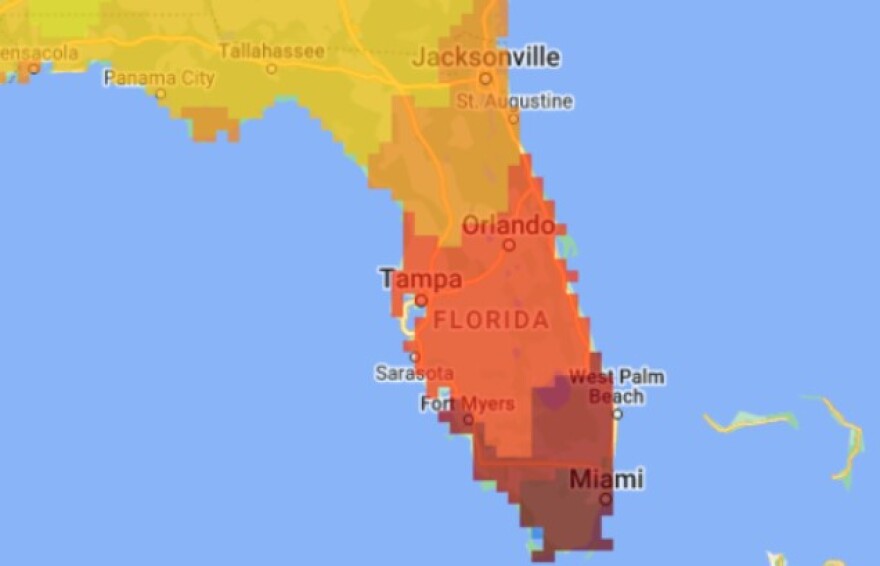A new interactive map shows how climate change will affect plant hardiness zones in Florida, as people will soon have to plant different tree species in their yards and parks.
The U.S Department of Agriculture already puts out what's called a plant hardiness zone map to help people understand which trees and plants are best suited for the region in which they live.
Dan Lambe is the chief executive of the international nonprofit Arbor Day Foundation, which partnered with Davey Tree Expert Company to combine that information with global warming data to create another map showing plant hardiness zones from 1980 through 2099.
Click here to look up your zip code on the interactive map.

“This map helps homeowners visualize how a warming climate will determine which trees and plants will thrive in their neighborhoods. And it really is not a planting guide as much as it's a reminder for people that climate change is here and we've got to be ready,” Lambe said.
"If we're going to invest the time, and if we're going to invest the money in planting trees, we want to make sure those trees survive and thrive. And so, we're helping people be thoughtful about what they're planting today that can live and thrive for decades to come.”
According to Dan Herms, vice president of research and development for Davey Tree, rare species with very limited distributions in northern Florida which are in danger of extinction in the state and potentially range-wide include the Florida Torreya: a rare glacial relic, and Florida corkwood: a rare colony forming shrub in coastal wet areas of northern Florida.
Herms also shared a list of widespread eastern tree species with southern limits of distribution in northern Florida that are at risk of extirpation, which means a species no longer exists in the wild in one location, but occurs elsewhere. These are not at risk of extinction because they are so common throughout the eastern U.S.
They include the shortleaf pine, Eastern cottonwood, river birch, white oak, Southern red oak, American sycamore, Sassafras, and American beech, among others.
“In general, species are most vulnerable to climate change at the southern limits of their distribution where they experience most stress from heat. At the northern range of their distribution, they have the potential to migrate farther north as climate changes,” Herms said in an email.
An example he gave is white spruce in the Arctic, which is migrating into the formerly tree-less tundra. Paper birch and sugar maple are other species that are increasingly stressed at the southern range of their distribution and will migrate north.
“One of the biggest questions: Can trees migrate fast enough to keep up with the rapidly changing climate? Most trees have wide enough distributions that they are not at risk of extinction. Trees with narrow distribution are more at risk, especially if they face multiple threats,” said Herms.
Whitebark pine is an example of that. It’s a high-altitude pine in the Rocky Mountains, which has been listed as an endangered species by the International Union of Conservation of Nature because it has limited places to migrate, it suffers from a bark beetle infestation, and is diseased by white pine blister rust.
Dan Lambe encourages people to plant native trees, but also diversify tree species to prevent against disease, insects and a changing climate.
"Planting trees and managing forests can help to protect and preserve some of those critical ecosystems," Lambe said, "especially in the wake of the increasing natural disasters that we're experiencing from fires to floods to hurricanes and tornadoes."
Copyright 2023 WUSF 89.7. To see more, visit WUSF 89.7. 9(MDA4MzM1MjM1MDEzMTg5NTk0MzNmOTQ5MA004))

